Caption: Dune symmetry on Mars. Credit: NASA/JPL/University of Arizona
It is so wonderful to see the Mars Reconnaissance Orbiter back in action, especially our favorite camera, the High-Resolution Imaging Science Experiment, or HiRISE. The HiRISE team released some of their latest images this week, and they are particularly stunning, including this one of symmetrical dunes in a small crater in Noachis Terra, west of the giant Hellas impact basin. Alfred McEwan, from the HiRISE team and the University of Arizona says the dunes here are linear, and are thought to be created due to shifting wind directions. In places, each dune is remarkably similar to adjacent dunes. The linear dune fields on Mars are similar to the ones seen on Titan, although not quite as large. The debris between the dunes are large boulders.
More images below, but on another note, HiRISE Twitter notes there will be a “big announcement” on Wednesday, January 20. A major discovery? Mission extension? Website redesign? Stay tuned.
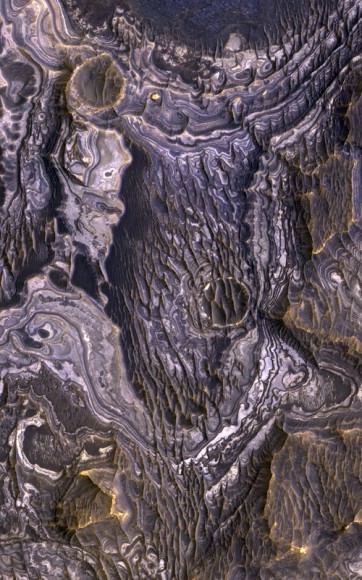
This jaw-dropping beauty accompanied a press release announcing that 21 articles from HiRISE made up the entire contents of a special January issue of the journal Icarus . The papers analyzed Martian landforms shaped by winds, water, lava flow, seasonal icing and more.
This view shows color variations in bright layered deposits on a plateau near Juventae Chasma in the Valles Marineris region of Mars.
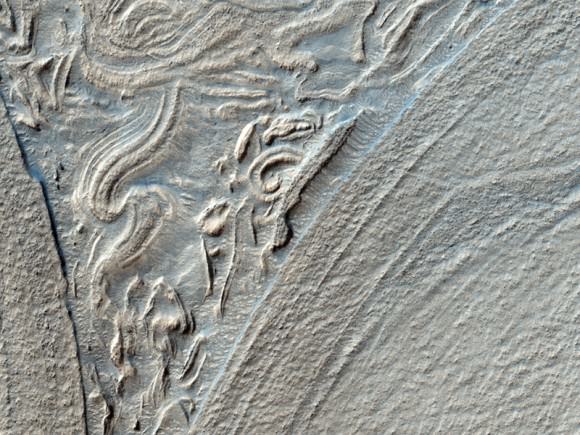
This almost looks like etchings on Mars’ surface, and they are very strange landforms indeed. McEwan notes that materials appear to have flowed in a viscous manner, like ice, here on the floor of Hellas Basin. Viscous flow features are common over the middle latitudes of Mars, but those in Hellas are especially unique, for unknown reasons.
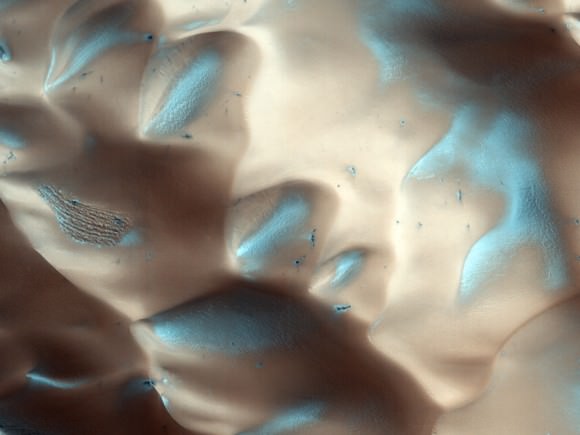
This is a beautiful shot of frost covered dunes inside a crater. The HiRISE team says that on the floor of this crater where there are no dunes, the ice forms an uninterrupted layer. On the dunes however, dark streaks form as surface material from below the ice is mobilized and deposited on top of the ice. In some cases this mobile material probably slides down the steep face of the dune, while in other cases it may be literally blown out in a process of gas release similar to removing a cork from a champagne bottle.
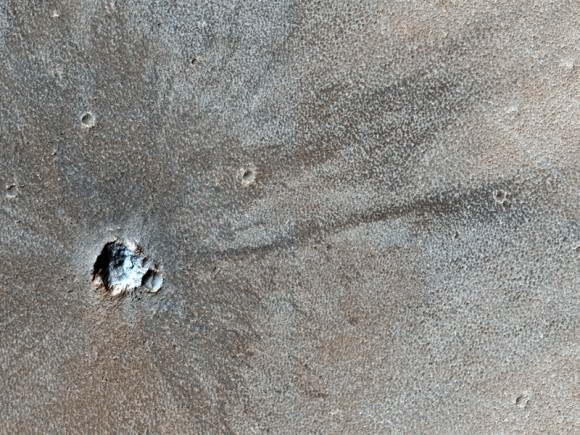
Recent impact crater. Credit: NASA/JPL/University of Arizona
This impact crater could be relatively new, as it does not appear in images taken by the Viking Orbiters in 1976. McEwan said the HiRISE team suspects that the crater is more than several decades old, however, “because at full resolution we see a textured surface that is common in dust-mantled regions of Mars, but absent in the youngest craters.” While it could have been created recently, the other explanation is that there may have been more dust on the surface in 1976 or the air may have been hazy, obscuring the crater.
Click on each of the images for access to the higher resolution versions, or go directly to the HiRISE website.

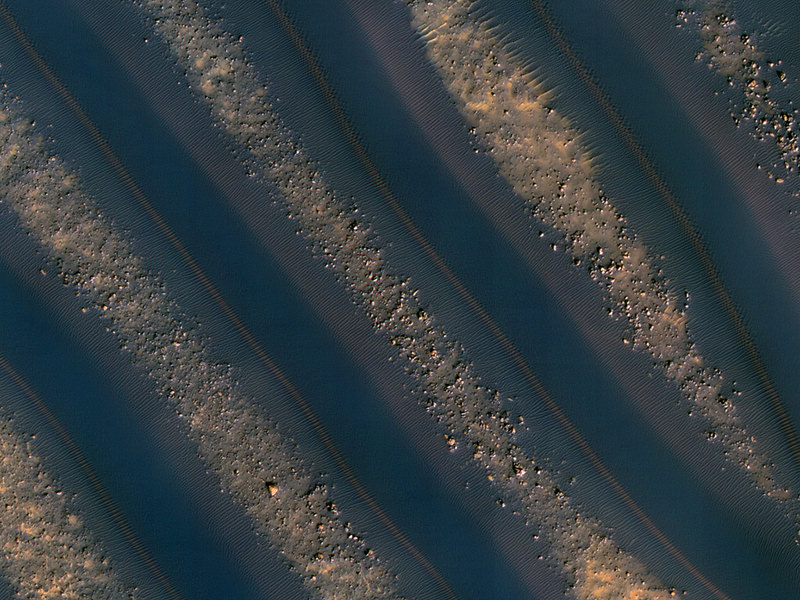
That second image looks like something out of the Alien movies, and if it wasn’t for the impossible scale, you could easily think that there were fossils of some monstrous alien life forms in the third photo.
Amazing & Beautiful~
HiRise our favorite camera? Yes.. Cassini or LRO close second and third?
tacitus:
That won’t stop Richard C. Hoagland from spouting his usual bloody rubbish!
Funny. I thought #2 was looked like an elf holding a tamborine riding on the head of a sea snake.